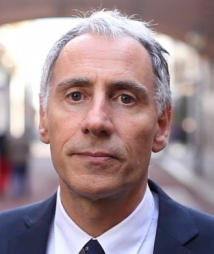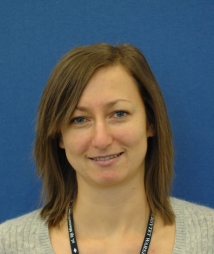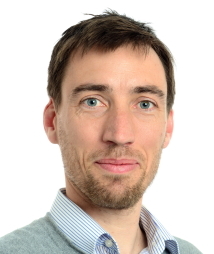THEME I – Adverse outcome pathways and exposure-response relationships for ionising and non-ionising radiation
Overview
The exposure of humans to electromagnetic radiation is increasingly gaining attention from society at large, who are concerned that such exposures might be a potential cause of ill-health.
Research projects in this Theme address the potential health effects of the most prevalent electromagnetic radiation that humans are exposed to, namely: ionising and non-ionising radiation, sunlight, mobile phone and radio waves. The approaches employed for these different waves are diverse, ranging from cell-based biological investigations to cohort studies and epidemiology.

Theme Leads
Dr Paul O’Mahoney

UK Health Security Agency
CRTH Projects:
Theme 1 Project 4: Potential effects of sunlight on cardiometabolic health
Paul is an engineer/physicist specialising in the interactions of light and living matter. He is leading the Optical Radiation Effects Group at the UKHSA, continuing the work of uncovering the interactions between light and life, and how these might impact human health.
Alongside extensive work on light dosimetry and safety, he is involved in clinical work, including clinical trials, and working with patients on designing research, treatments and after-care. He has also worked in instrumentation development, designing and validating devices for use in research or clinical practice. Most notably I led a British Skin Foundation funded project to develop an LED-based device for clinical phototesting.
His research group at the UKHSA is concerned with studying the effects of optical radiation on human health. This includes the beneficial and detrimental effects of natural daylight and artificial light sources, from the ultraviolet (UV) through the visible light spectrum to near-infrared (N-IR).
Professor Mireille Toledano

Theme 1 Co-Lead
School of Public Health, Imperial College London
CRTH Projects:
Theme 1 Project 1: Nuclear installations and childhood cancer
Theme 1 Project 3: Health risks associated with mobile phones and police radios
Theme 2 Project 4: Biomarkers of early-life exposures and neurodevelopmental outcomes
Publications:
Theme I Projects
Project outline: As part of ongoing surveillance of nuclear installations in Great Britain, the Committee on Medical Aspects of Radiation in the Environment (COMARE) requested that the UK Small Area Health Statistics Unit (SAHSU) undertake a re-evaluation of childhood cancer near 28 installations following previous reports of an excess cancer risk near nuclear sites. We are using data on incident cases of cancer from 1995-2016 from the UK Health Security Agency (UKHSA) and the Office for National Statistics (ONS) historical data, Welsh Cancer Intelligence & Surveillance Unit (WCISU) and Scottish Information Services Division (ISD).
Overall objectives: We will compare sex-specific annual incident cases and the overall age distributions of cases of childhood cancers (<15 years) around nuclear installations to reference levels, and conduct specific analyses by country and cancer type (Leukaemia and/or non-Hodgkin’s Lymphoma (LNHL), Central Nervous System (CNS) tumours and solid tumours).
Project outline: Exposure of the heart to ionising radiation increases the risk of developing cardiovascular disease. Upon irradiation, endothelial cells that constitute the inner lining of the coronary artery, become highly adhesive and less tightly associated with each other. This increases the likelihood that circulating monocytes would be trapped by the sticky surface of the endothelial cells and readily make their way through the more permeable endothelium into the arterial wall, which is a cardinal step in formation of atherosclerotic plaques. These radiation-induced endothelial properties are akin to those that emerge spontaneously with age, raising the question of whether radiation induces ageing and whether age at exposure is an important determinant of adverse outcome (atherosclerotic diseases).
Overall objectives: The aim is to ascertain whether age (17 to 60 years) at time of exposure is a determinant of an adverse outcome of radiation to the coronary artery. Endothelial cells from human coronary artery derived from donors of different ages will be X-irradiated (≥2 Gy) and subjected to functional assays that will measure adhesiveness of their apical surface and permeability of the endothelial layer. These results will inform whether age has an influence on the magnitude of radiation effects on these cells.
Project outline: Epidemiological studies on the safety of exposure to radiofrequency electromagnetic fields (RF-EMF) emitted by modern mobile communication devices have found no convincing evidence of adverse health effects, however given their relatively recent introduction and their almost ubiquitous use it is essential to continue investigation of any potential long-term effects.
Overall objectives: The aim of this project is to investigate long-term health effects of RF-EMF exposure in some of the largest worldwide study cohorts of mobile communications users. We will analyse cancer risk and mobile phone use in the international COSMOS study of over 300,000 mobile phone users (100,000 in the UK) and initiate analyses of mobile phone use and cardiovascular disease; we will investigate the longitudinal association between use of mobile phones and other wireless technologies, and cognitive development in the SCAMP cohort of ~6,000 adolescents across Greater London; and we will continue follow up of the Airwave study of the British police forces with a view to further quantifying cancer risk in relation to police radio use.
Project outline: The adverse health effect (melanoma) resulting from over-exposure to the sun forms the basis of current public health advice, which advocates close to total sun-avoidance. However, an increasing number of emerging reports suggest that sunlight induces hitherto unappreciated health benefits beyond vitamin D synthesis, that could reduce blood pressure, suppress weight gain from consumption of high-fat diets and prevent a range of metabolic disorders. One of the underlying mechanisms is thought to be light-induced production of nitric oxide, which we have characterised to be readily triggered in skin cells by ultraviolet A (UVA). There are also emerging reports that light at longer wavelengths within the visible solar spectrum has beneficial health effects as well. It is now necessary to ascertain the limits of the UVA effect in time and dose, and to explore the potential biological impact of other wavelengths of the solar spectrum.
Overall objectives: To ascertain the duration of nitric oxide production from acute exposure to UVA. To establish an out-door experimental platform to measure the effects of actual solar radiation on DNA damage and nitric oxide production. Following characterisation of UVA-induced production of nitric oxide, we will proceed to study the impact of UVA exposure as a function of time. This is necessary to ascertain the duration of the effect and to assess the likelihood of it having a significant impact on the body. Primary healthy human skin cells will be exposed to UVA light at a dose that is equivalent to 30 minutes of exposure to midday sun in UK in the summer. The production of nitric oxide will be tracked from the point of exposure for up to 5 days. At the same time, we will set-up an experimental platform to measure the impact of actual sunlight (with measured solar doses) on DNA damage as well as nitric oxide production.
Theme I Investigators
Professor Paul Elliott

HPRU Director
School of Public Health, Imperial College London
CRTH Projects:
Theme 1 Project 1: Nuclear installations and childhood cancer
Theme 1 Project 3: Health risks associated with mobile phones and police radios
Theme 2 Project 2: Pathways and biomarkers of mixtures of chemical exposures
Theme 2 Project 4: Biomarkers of early-life exposures and neurodevelopmental outcomes
Theme 3 Project 3: Chemical exposures and health effects near selected brownfield sites
Publications:
Dr Stephen Barnard

Investigator
UK Health Security Agency
CRTH Projects:
Theme 2 Project 1: Exposure and risk markers in medical uses of IR
Theme 3 Project 2: Occupational exposure to ionising radiation
Research Areas:
Stephen is currently working at UKHSA in the Radiation Effects department of the Centre for Radiation, Chemical and Emergency Response (CRCE). In his research area, he develops techniques in biological dosimetry (dicentric, micronuclei and FISH translocations) with a particular focus on implementing and improving the gamma-H2AX/53BP1 foci assay for rapid/triage dose estimation as well as clinical patient applications. He also has an interest in researching the role of radiation in cataractogenesis and lens epithelial cells, particularly the role of DNA damage/repair and proliferation.
Publications:
Dr Bethan Davies

Investigator
School of Public Health, Imperial College London
CRTH Projects:
Theme 1 Project 1: Nuclear installations and childhood cancer
Theme 2 Project 3: Biomarkers of potential exposures from brownfield sites
Theme 3 Project 3: Chemical exposures and health effects near selected brownfield sites
Publications:
Dr Daniela Fecht

Investigator
School of Public Health, Imperial College London
CRTH Projects:
Theme 1 Project 1: Nuclear installations and childhood cancer
Theme 3 Project 3: Chemical exposures and health effects near selected brownfield sites
Publications:
Mr Gareth Hazell

Investigator
UK Health Security Agency
Theme 1 Project 4: Potential effects sunlight on cardiometabolic health
Research Areas:
Publications:
Mr Joel Heller
Investigator
School of Public Health, Imperial College London
CRTH Projects:
Theme 1 Project 3: Health risks associated with mobile phones and police radios
Publications:
Dr Sylwia Kabacik

Investigator
UK Health Security Agency
CRTH Projects:
Research Areas:
Sylwia obtained her BSc and MSc in biotechnology from Warsaw University. During her PhD, she developed a gene expression based assay for radiation biodosimetry purpose which is currently used in the department. Sylwia joined the Cellular Biology group 6 years ago to investigate the mechanism by which ionising radiation can cause cardiovascular disease.
Sylwia is interested in mechanistic aspects of radiation biology, particularly in non-mutation routes by which radiation can instigate pathology. At the moment she is studying radiation-induced post-mitotic cell fusions which give rise to dangerous polyploid cells. Additionally, she is involved in investigating the mechanisms of epigenetic ageing.
Sylwia has over 10 years’ experience in molecular biology and co-authored a number of papers in the radiobiology field.
Publications:
Dr Marina Khazova
Investigator
UK Health Security Agency
Theme 1 Project 4: Potential effects sunlight on cardiometabolic health
Research Areas:
Ms Marina Khazova is Principal Researcher in the Laser and Optical Radiation Dosimetry group at UKHSA. Her research interests include investigations into health effects of optical radiation, both natural and artificial, metrology and instrumentation for the assessment of exposures to optical radiation. She co-authored more than 80 publications and international patents and is currently the UK technical expert in international standard committees in safety of laser products and protective eyewear.
Publications:
Dr Frédéric Piel

Training Programme Coordinator
School of Public Health, Imperial College London
CRTH Projects:
Theme 1 Project 1: Nuclear installations and childhood cancer
Theme 3 Project 3: Chemical exposures and health effects near selected brownfield sites
Publications:
Dr Steven Shen

Investigator
School of Public Health, Imperial College London
CRTH Projects:
Theme 1 Project 3: Health risks associated with mobile phones and police radios
Research Areas:
I am a Research Associate in the Department of Epidemiology and Biostatistics, Imperial College London. I obtained my PhD (life course and lifestyle epidemiology) from The University of Hong Kong. My research interests focus on adolescent physical and mental health in relation to a wide range of lifestyle factors such as digital technology use, sleep, and physical activity. I am now working on Study of Cognition, Adolescents and Mobile Phones (SCAMP), which is investigating potential effects of mobile phone and other wireless devices on adolescents’ mental health and cognition.
Publications:
Professor Mireille Toledano

Theme 1 Co-Lead
School of Public Health, Imperial College London
CRTH Projects:
Theme 1 Project 1: Nuclear installations and childhood cancer
Theme 1 Project 3: Health risks associated with mobile phones and police radios
Theme 2 Project 4: Biomarkers of early-life exposures and neurodevelopmental outcomes


